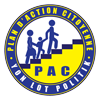Indian Wells, Calif.—The fearsome political network backed by billionaire donors Charles and David Koch has a strategy to keep America red in November 2018.
The goal is simple: They’re prepared to spend upwards of $400 million to keep the House, Senate, state legislative chambers and governorships firmly in Republican hands.
“Hold the Senate, hold the House, and defend in the states and the governors’ elections as well as the state legislative seats,” Emily Seidel, CEO of the Kochs’ political advocacy arm Americans for Prosperity (AFP), told hundreds of donors packed into a ballroom in Indian Wells, Calif, on Monday.
Achieving that goal will not be so simple. The Koch network — comprised of business and political advocacy arms and thousands of donors — is gearing up for what they see as perhaps the toughest election in which they have ever invested. AFP president Tim Phillips said he sees 80 competitive House races this year. House Minority Leader Nancy Pelosi only needs 24 seats, he noted, to again become speaker of the House.
“Historically, the new president’s party suffers in the midterms at both the federal and state levels. We think about Bill Clinton in 1994, Barack Obama in 2010,” Seidel said. “Both had approval ratings in the mid 40s and suffered tremendous losses in the House and Senate. Now making the environment even more challenging this year are the high unfavorable ratings plaguing both President Trump and the Republican-led Congress. And the recent elections in Virginia and Alabama suggest that both anger and enthusiasm are high among progressive groups. And so, many are saying 2018 may be a wave. And the Democrats are certainly fundraising off that.”
Seidel and Phillips emphasized to donors in the room Monday — donors who had to contribute at least $100,000 to attend the winter gathering of what is known as the Network Seminar — how crucial those victories are for protecting Republican achievements in 2017, such as tax reform. Many of the weekend’s speaking engagements, or at least those open to the press, stressed the importance of the tax cuts passed in 2017 to encourage entrepreneurship, buoy middle and lower-income Americans and increase individual freedom.
But Phillips said AFP and their allies already have the grassroots support and strategy in place to maintain GOP majorities.
Here is how their strategy breaks down:
The Senate
With Republicans holding a razor-thin majority of 51 to 49 seats in the Senate, the Koch network wants to invest in paid media ads early. Seidel said most voters decide who to support long before ads hit the air, and that they don’t want to invest in the races that are a clear win or a clear loss.
“See, we take a business-like approach to this,” she said. “We don’t want to waste resources on a race that’s either a clear loss or a clear win. We want to make the difference.”
Right now, the Koch network is analyzing 14 competitive Senate races. Already, they’ve already found four they intend to invest in, targeting Democratic incumbents in Wisconsin, Indiana, Missouri and Florida. Those are all races where AFP and its affiliates will be on the offensive, working to take those states from Democrats. They’re also all states Mr. Trump won in 2016.
In Florida, the network already has tens of thousands of activists in place. The Koch-affiliated Libre Initiative, a Hispanic outreach organization, has already been knocking on doors to tell people how their senators voted on the new tax law, and pitch the benefits of it to Florida voters. The Koch network has announced it will spend $20 million on what is effectively a public relations campaign for the tax law, after spending $20 million to help it pass.
“We’re the only group on the outside that has the infrastructure to seize opportunities across these states,” Seidel said.
The House
The Koch network’s data arm, i360, is using complex data analytics to rank competitive House races. AFP and related groups will weigh the most competitive races, and determine which politicians champion their causes, and who has the best chance of winning, to decide where to invest ahead of November.
“By the time we get to late spring, that list will be much more developed because the races will be developed,” Phillips said.
Then, the network will look to direct mail and digital efforts to reach voters. In late summer into early fall, AFP and others will also be ramping up their grassroots efforts.
The governor seats
This fall, 36 governor seats are up for grabs, 26 of which are currently held by Republicans. AFP is analyzing 15 races to determine which ones to invest in ahead of November, and they’ve already selected five — Nevada, Wisconsin, Illinois, Michigan and Florida, which all currently have Republicans in the governor’s office.
They’re already engaging with media buys, and recently bought a seven-figure ad buy supporting Adam Laxalt, Nevada’s current attorney general who is vying to be the next GOP governor.
The state legislative seats
AFP will also be investing in state legislative races.
“These races are so critical to our overall strategy,” Seidel said.
Republicans in the last decade have been gaining ground in statehouses across the country. In 2010, the GOP controlled 14 state legislatures. After the 2016 election, they controlled 32, an historic high for them, and a historic low for Democrats.
But the fragility of some of that control became especially apparent after Virginia’s Republican House of Delegates nearly lost their majority to Democrats by one vote in one race. The AFP and allied groups will decide which races are the most competitive in the most competitive chambers, and support those candidates.
“History and the current political climate mean that 2018 is going to be a difficult year. We’ve never faced a challenge like this year brings. But we see pathways to success,” Seidel said, telling donors their investments are needed — and needed now.
“So folks, let’s fight. And let’s fight now.”

